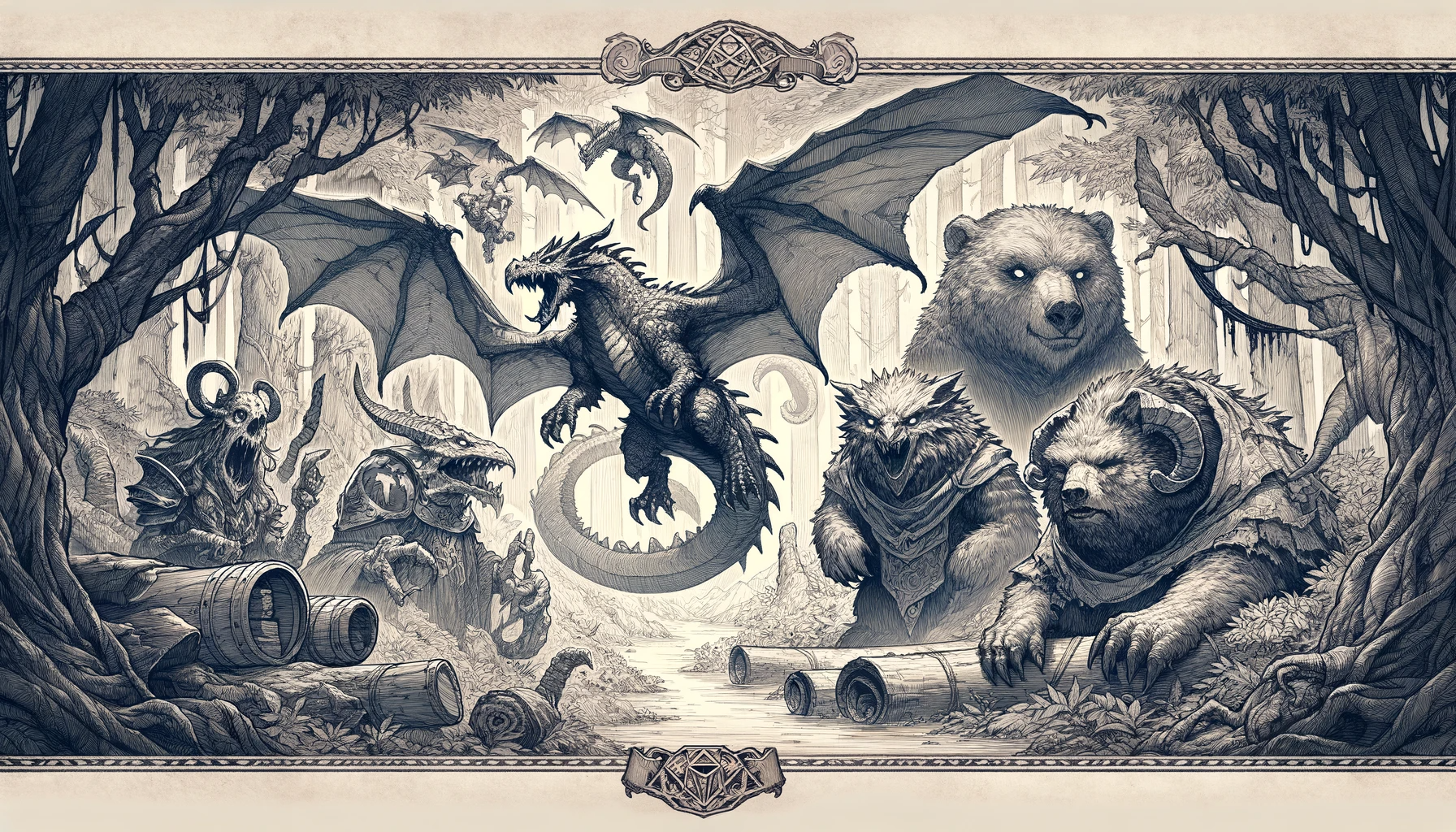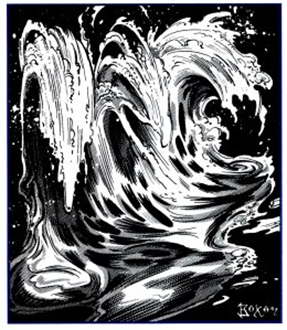Aballin (AD&D 2E): Difference between revisions
No edit summary |
m (Bsycamore moved page Aballin to Aballin (AD&D 2E)) |
(No difference)
| |
Revision as of 06:43, 4 July 2024
Name: Aballin Climate/Terrain: Temperate or tropical / Wilderness or subterranean Frequency: Uncommon Organization: Solitary Activity Cycle: Any Diet: Omnivore Intelligence: Average (9) Treasure: I Alignment: Neutral
Number Appearing: 1-4 Armor Class: 4 Movement: 6, Sw 15 Hit Dice: 3 THAC0: 17 # of Attacks: 1 Damage/Attack: Special Special Attacks: Drowning Special Defenses: See below Magic Resistance: Nil Size: L (10’) Morale: Very steady (14) XP Value: 270
Also known as living water, aballins are fluid monsters that entrap and drown creatures unfortunate enough to venture within their reach.
Aballins in their passive state present the appearance of large puddles of seemingly normal water, devoid of fish or other living creatures. However, those looking down at the aballin often notice coins, jewelry, or other metal effects of the monster’s past victims resting beneath the surface of the water, apparently awaiting recovery. Though they resemble an elemental creature of water, aballins are actually comprised of a weak acid, which over the course of three weeks digests organic matter, leaving behind items made of metal. Because of this, spells such as water breathing offer no help in surviving the effect of drowning in their fluids.
Combat:
In its passive state, the aballin is indistinguishable from fresh water, and cannot be harmed by attacks which would otherwise prove harmless to that element. Such an unthreatening appearance often results in potential prey attempting to take a refreshing drink or trying to simply move through the monster or reach in to recover tempting valuables. Any of these actions arouse the aballin to attack, and the creature instantly alters its molecular structure into a gelatinous pseudopod that lashes out and tries to envelop a victim. If its attack roll succeeds, a man-sized or smaller creature is drawn within and begins suffocating (see “Holding Your Breath” in the Player’s Handbook for the effects of drowning).
While in this gelatinous state, the aballin becomes susceptible to attacks by blunt weapons of +1 or greater enchantment. Edged weapons have no effect whatsoever, and actually have a 25% risk of instead striking any person trapped within the aballins amoeboid form. Those within the form may attack, but cannot escape the suffocation attack or use items requiring normal speech (such as spells). An aballin will only attack one individual at a time.
Aballins are immune to fire, cold, electricity, poison, and paralysis. A transmute water to dust spell will cause an aballin to make a save vs. death; if it fails, it will perish. A lower water spell will force the creature to make a save vs. spells or release its victim immediately.
Aballins have no eyes. Instead, they keep track of their victims through scent and vibration. For this reason, they are immune to all spells or attacks that alter vision or that affect the subject through vision. These include invisibility, colour spray, hypnotic pattern, most illusions, fire charm, blindness, blur, and many others.
Habitat/Society:
While sometimes seen outdoors masquerading as a puddle, small pond or fountain-or even a drainage ditch-an aballin is most often encountered in damp cavernous areas with an abundance of water, which permit it to blend in with its surroundings. While in the element of water, the monster is naturally invisible, and so it prefers to rest within the shelter of pools or other small bodies of water.
The aballin is able to propel itself through water with amazing speed, and occasionally traverses lakes, rivers, or streams in search of food. It may also move slowly upon land by oozing, or by laboriously extending its gelatinous pseudopods and inching itself forward, much like a slug. (In fact, like the slug, the aballin leaves a faintly discernible slimy trail when traveling upon land.) Due to its semiliquid composition, the creature is incapable of ascending surfaces with greater than a 30° slope.
Aballins can be encountered either singly or in families of up to four individuals. Mated pairs occasionally function as a single entity, with doubled size and Hit Dice, particularly if there are any young present.
Ecology:
These monsters occasionally prove useful in keeping down the population of other harmful creatures or plants which might be found in or near water. They also function as scavengers, digesting any remains they happen upon in their travels.

